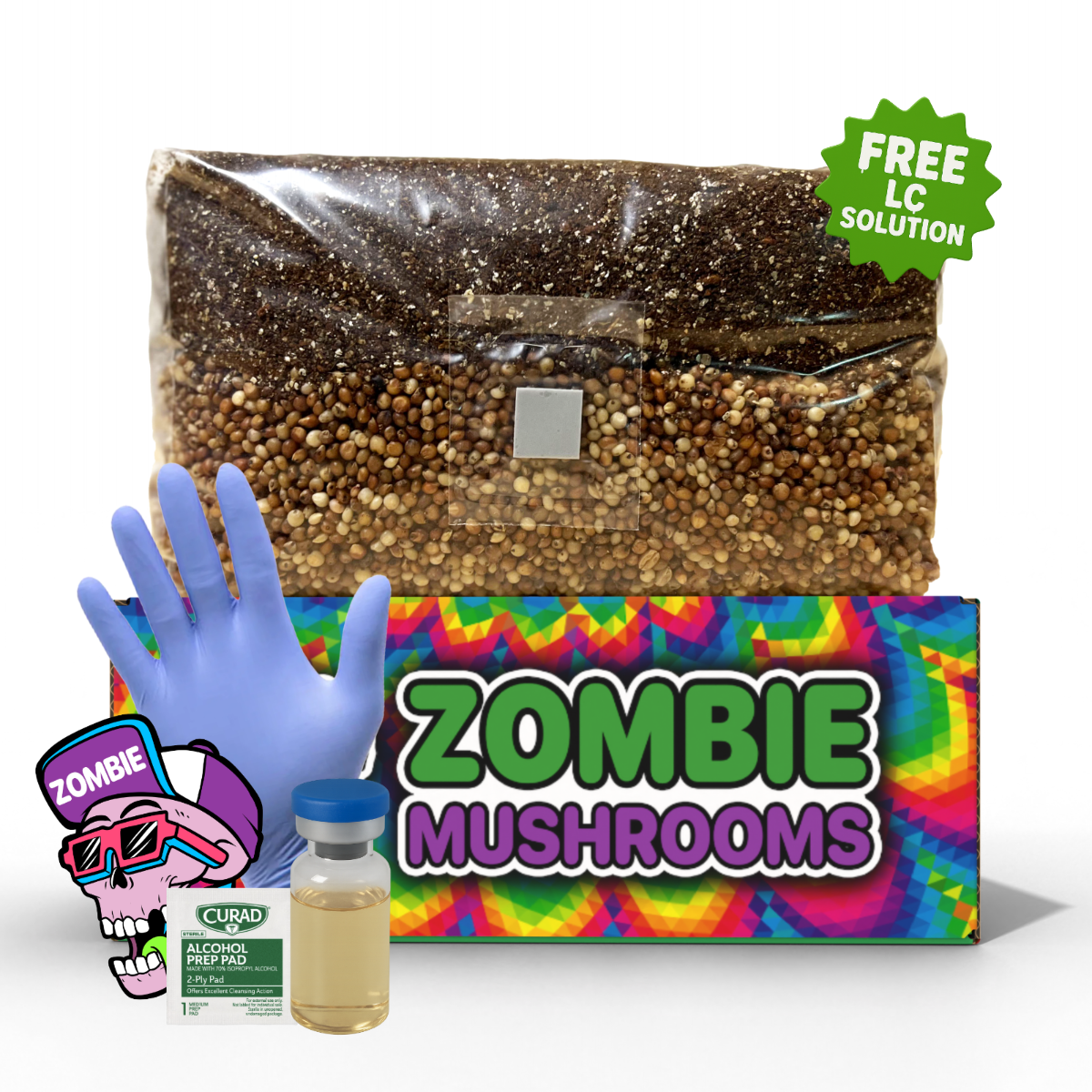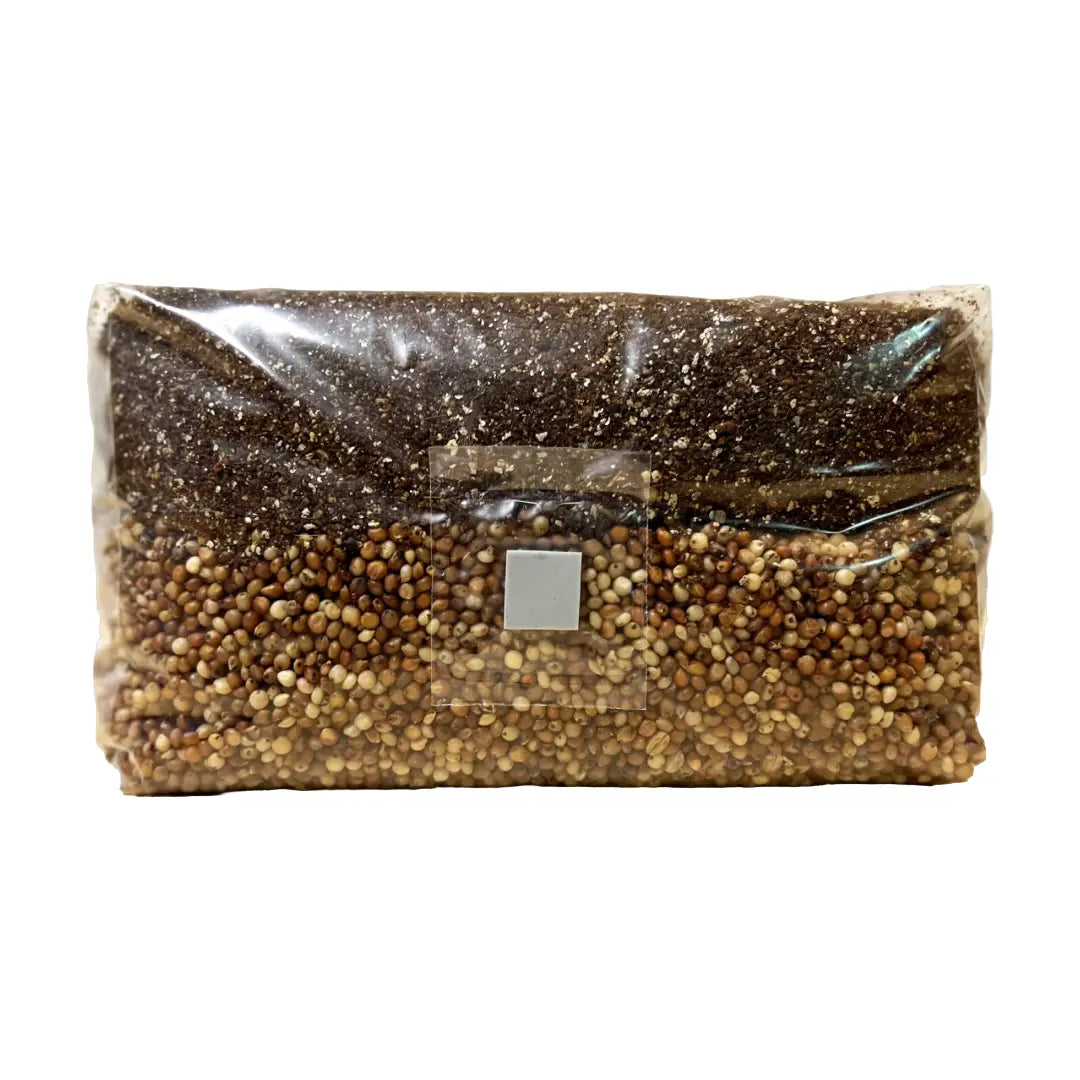⬇️ Prefer to listen instead? ⬇️

- ⚠️ Over 70% moisture in mushroom substrate increases contamination risk (Chang & Miles, 2004).
- 🌡️ Mycelium growth rate drastically decreases when temperatures exceed 28°C (Royse et al., 2017).
- 🧫 Weak or contaminated inoculants are among the top failure causes for new growers (Stamets, 2010).
- 🧪 Up to 50% of home grows fail due to poor sterilization techniques (Stamets, 2000).
- 🍄 Using the wrong substrate can reduce mushroom yield by as much as 60% (Royse et al., 2017).
Growing mushrooms at home can be exciting — but when your mycelium is not growing, it can feel discouraging. Slow or stalled mycelial expansion is a common issue even among experienced cultivators. The causes often involve moisture imbalance, temperature being off, weak inoculants, or improper substrate. Using reliable tools like mushroom grow bags helps create stable conditions that support healthy mycelial growth. In this guide, we’ll explore what holds mycelium back, how to diagnose the issue, and what fixes tend to work best.

What Healthy Mycelium Growth Looks Like
First, you need to understand how mycelium should grow. This helps you know when something is wrong. Healthy mycelium looks like a bright white, fuzzy, thread-like patch growing out from where you added the spores. In the first 5 to 10 days, you should see it grow steadily out across your mushroom substrate. Full colonization usually takes two to three weeks. This depends on the mushroom type, moisture, temperature, and spawn used. If you see no growth by day 14, it is time to look for problems.
Early signs of growth can be small. You will see tiny white spots form around the inoculation point. Then, over the next few days, these spots should multiply and join together into one solid white mass.

Finding and Maintaining Proper Moisture
Moisture is critical for successful mycelium colonization—but both extremes can stall growth:
-
Dry substrate halts mycelium because it can’t transport nutrients or expand.
-
Overly wet substrate suffocates the culture, reduces air space, and invites bacterial contamination.
How to test for ideal moisture (“Field Capacity”)?
Squeeze your substrate—only a few droplets should appear. If water gushes out, it’s too wet. If the substrate is dusty or powdery, it’s too dry.
How to Fix It:
-
For dry substrate: mist with sterilized water or soak small trays, then allow excess moisture to drain.
-
For wet substrate: mix in dry material or spread out and let air dry briefly.
-
For consistency: weigh substrate before and after wetting to replicate moisture percentages in future batches.
📊 Mycelium usually grows on substrates with 50–60% moisture. If moisture is over 70%, the risk of contamination grows fast (Chang & Miles, 2004).

Keeping Temperature in the Ideal Range
Mycelium growth depends heavily on stable temperature—too high or too low and progress slows or stops outright.
-
Each mushroom species has a “sweet spot” for colonization—for many gourmet varieties, this is between 75-85°F (24-29°C); others prefer cooler zones.
-
Temperatures over ~30°C can encourage bacteria and heat stress; under ~65°F (18°C) leads to metabolic slowdown.
Fixes:
-
Use thermostatic heating pads or coolers in grow rooms.
-
Monitor temps with digital sensors.
-
Place grow bags or substrate containers away from direct sunlight or enclosed hot spots.
Ideal Colonization Temperatures by Species:
| Mushroom Species | Ideal Temperature Range |
|---|---|
| Oyster (P. ostreatus) | 24–27°C (75–81°F) |
| Lion’s Mane (H. erinaceus) | 20–24°C (68–75°F) |
| Shiitake (L. edodes) | 21–25°C (70–77°F) |
| Reishi (G. lucidum) | 25–30°C (77–86°F) |
More Tips:
- Use Wi-Fi thermometers to check temperature all the time.
- Put your grow chamber in the warmest room of the house in winter.
- Do not use hot attics in summer. Temperatures over 28–30°C can kill growth right away.
❄️ Pleurotus ostreatus grows much slower if the substrate gets hotter than 28°C (Royse et al., 2017).

Incomplete or Improper Sterilization
New growers often overlook sterilization. This causes many failures. Mycelium grows slowly and carefully. But contaminants like Trichoderma or Bacillus can grow faster and take over your culture in just one day. Any slip in cleanliness lets invaders start growing before your mushroom spawn can get established.
Common Mistakes:
- Insufficient time in pressure cooker: You must sterilize grain spawn or enriched sawdust substrates at 15 PSI for 90–120 minutes.
- Allowing cooling air exposure: If you open jars or spawn bags before they cool to room temperature in a sterile space, you pull in airborne spores.
- Improper bag sealing: Loose or unfiltered lids/bags allow oxygen—but also spores—to sneak in.
Recognizing Sterility Failure:
- Green-blue or black spotting (Trichoderma or Aspergillus).
- Pink or red spots (yeast or bacterial contamination).
- Liquid pooling inside jars or bags.
- Unpleasant smells—ranging from vinegar to socks.
How to Be Clean:
- Use 70% isopropyl alcohol to clean all work areas.
- Wear gloves and a mask.
- Put your spores or culture inside a still-air box or laminar flow hood.
- Heat needles and tools with a flame before each use.
🔬 Contaminants can increase the failure rate by up to 50% in home setups if you do not sterilize correctly (Stamets, 2000).

Weak or Contaminated Inoculant
It does not matter how perfect your mushroom substrate or conditions are. Bad spawn means a bad grow. Weak or contaminated inoculant is often too small to see at first. Because of this, even experienced growers test every new batch before growing more.
What’s Considered a Bad Spawn?
- Appears discolored—brown, green, or yellow.
- Feels mushy or gooey where it should be firm and fibrous.
- Smells sour, alcoholic, or rotten—instead of fresh mushrooms.
Causes:
- Spores or liquid culture stored at room temp for too long.
- Shipping damage during hot seasons.
- Contamination during lab production (happens even at good suppliers).
Be More Sure About Your Cultures:
- Test every new batch. First, move it to agar.
- Put it into one test grain jar before using a new syringe or spore print.
- Buy from good, well-reviewed sellers who promise fresh products.
🧪 Weak or contaminated inoculants are a main reason why new mushroom growers fail (Stamets, 2010).
Not Enough Gas Exchange
Mycelium breathes in oxygen and breathes out CO₂. If there is not enough gas exchange, CO₂ builds up inside the containers. This suffocates the growing culture. A sealed environment might seem like it stops contamination. But a tight seal without filters traps old air. This delays or completely stops growth.
Clear Signs of Poor Gas Exchange:
- Mycelium starts and stops growing abruptly.
- Your mushroom substrate smells fermented or sour.
- The bag or jar dome bulges outward intermittently.
- No visual condensation or overly wet walls (insufficient breathing).
How to Fix It:
- Use jars with lids that can breathe—tyvek paper, polyfill, or synthetic fiber discs.
- Use grow bags with filter patches (at least 0.2μm rating).
- For monotubs, make sure air flows through polyfill-filtered holes near the surface and top.
A Good Idea: Put micropore medical tape over any air holes. This helps keep things in, but still lets air move.
🌬️ Mycelium puts out CO₂. It needs good air flow to avoid stopping or contamination (Chang & Miles, 2004).

Wrong Substrate for the Species
One common mistake you can easily prevent: using the wrong substrate for the mushroom type you want to grow. Not all fungi digest the same food sources well. For example, oyster mushrooms grow well on plain straw. But lion’s mane needs more nutrients from hardwoods.
Matching Mushroom Species to Substrate:
| Mushroom Type | Preferred Substrate |
|---|---|
| Oyster (Pleurotus spp.) | Straw, coffee grounds, coco coir, cardboard |
| Shiitake (Lentinula edodes) | Sterilized hardwood sawdust, oak logs |
| Lion's Mane (Hericium erinaceus) | Hardwood sawdust + wheat bran |
| King Oyster (P. eryngii) | Sawdust with bran and calcium carbonate |
| Portobello / Button | Compost, manure-enriched straw |
Do Not Use the Wrong Substrate:
- Growing Lion’s Mane on straw leads to little growth.
- Growing oysters on a log might colonize, but very slowly.
- Using rich manure compost for wood-loving mushrooms can bring in bacterial contamination.
⚠️ Using the wrong substrate can reduce mushroom yield by up to 60%, depending on the mushroom type (Royse et al., 2017).

Patience: It Might Just Be Too Soon
You put in the culture, placed the bag in the grow chamber, and now you are checking it…every day. But mycelium does not grow right away. Many new growers think something is wrong after only waiting three or five days. In fact, full colonization often takes one to three weeks. This depends on temperature, substrate, and how you added the spawn.
Typical Mycelium Timelines:
| Inoculation Method | Expected Visible Growth |
|---|---|
| Liquid Culture to Grain | 5–10 days |
| Grain to Bulk Substrate | 10–14+ days |
| Spore Syringe to Agar | 5–7 days for germination |
| Agar to Grain | 14–21 days |
Tips to Help You Wait:
- Write down what you do each day. Take notes and photos.
- Do not open your bags or jars every day. Looking inside brings risk.
- Use a flashlight behind the substrate to see growth you cannot see.
If you still see no sign of life after three full weeks, then assume you have contamination, failed inoculation, or a substrate problem.

Quick Visual and Sensory Checklist
A quick checklist can save time and help protect your harvest. Use the table below if you are not sure where to start:
| Symptom | Possible Cause |
|---|---|
| No visible growth at 2 weeks | Weak inoculant or low temperature |
| Green mold patches | Contamination from poor sterilization |
| Substrate smells sour | Excess moisture, poor gas exchange |
| Substrate remains dusty | Too dry—recheck field capacity |
| Sliminess on surface | Bacterial contamination |
Keep this printable version next to your workspace to make live assessments easier.
Troubleshooting Recap: Mistakes and Quick Fixes
- 💧 Too dry or wet substrate? Adjust moisture with spraying or drying.
- 🌡️ Temperature off? Use heating or cooling pads for the right range.
- 🧫 Not clean enough? Get a still-air box or HEPA filter hood.
- 🦠 Weak spawn? Test with a trial jar or petri dish. Try new, checked suppliers.
- 💨 No air flow? Add breathable filters or good monotub airflow.
- 🍄 Wrong mushroom substrate? Match each mushroom type to its best food.
- ⏳ Are you too eager? Wait at least 10–21 days. This depends on your spawn and grow method.
FAQ
-
When should I expect to see mycelium growth?
Evidence of mycelium (white thread-like growth) typically appears within 5-10 days for rich spawn, though full colonization often takes 2-3 weeks depending on species and conditions. -
Is no growth after 14 days always a failure?
Not always—but by two weeks, if nothing shows, it’s worth reviewing your spawn quality, temperature, moisture, and sterility. -
Can weak or contaminated spawn be rejuvenated?
Sometimes. You can test with a small sample on agar; if it looks strong and uncontaminated, use fresh spawn. But heavily contaminated or weak spawn usually needs replacing. -
How much air exchange does mycelium need?
Adequate oxygen is needed for mycelial respiration. Use grow bags with filter patches or breathable lids. Sealed containers without airflow often stall out. -
What substrate should I use to get strong mycelium growth?
Match substrate to the fungal species—straw works well for Oyster, hardwood sawdust or logs for species like Shiitake. Using the wrong substrate slows growth significantly.
Final Thoughts: Learn from Failure in Mycology
Every mushroom grower has had a grow stop. What sets experienced growers apart is their ability to find problems and try again. If your mycelium is not growing, it is not the end. It is information. Each failed batch teaches you more about setting up your environment, choosing materials, and how living things react. The main things are to be consistent, write things down, and keep making changes. Growing mushrooms is about understanding fungi, and also about understanding your environment.
Do you need someone else to look at your grow? Send photos and join the talk at Zombie Mushrooms. We are a group of growers who help each other grow mushrooms better, one flush at a time.
Citations
-
Chang, S. T., & Miles, P. G. (2004). Mushrooms: Cultivation, nutritional value, medicinal effect, and environmental impact (2nd ed.). CRC Press.
-
Royse, D. J., Baars, J., & Tan, Q. (2017). Mushroom cultivation in the 21st century: Trends and expectations. Applied Microbiology and Biotechnology, 101(1), 1–9.
-
Stamets, P. (2000). Growing Gourmet and Medicinal Mushrooms (3rd ed.). Ten Speed Press.



